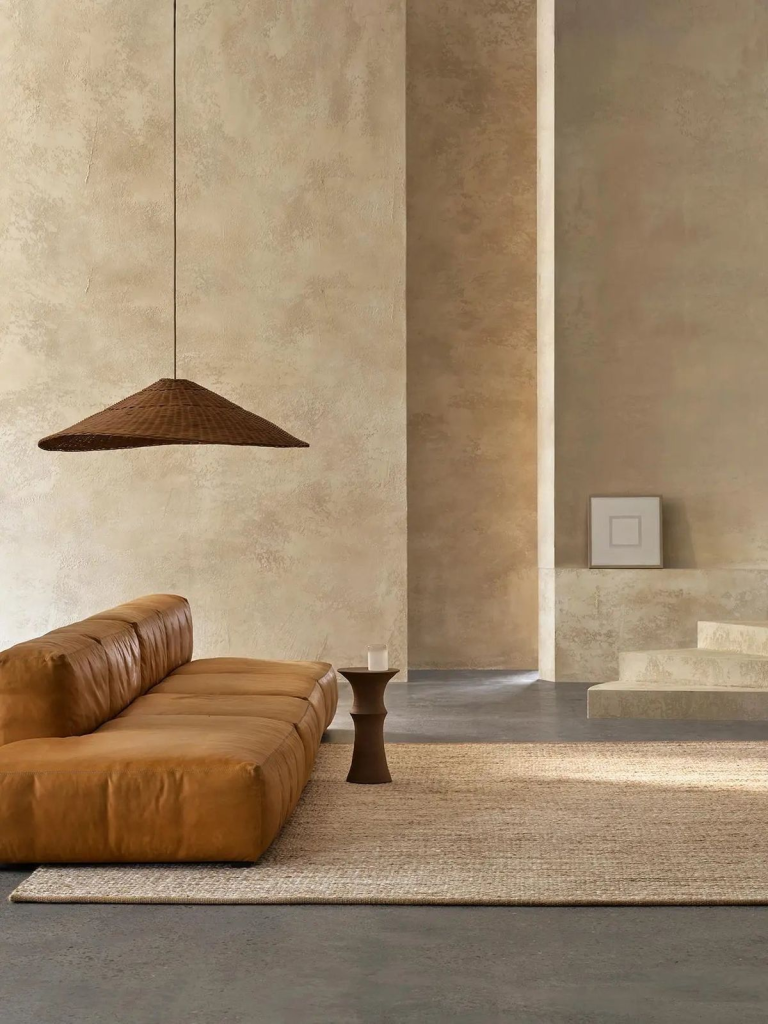While you may have heard of “man cave” hobby rooms, this emerging design trend is a little more literal. Having been out of style for a short period of only 150,000 years, cave living is making a comeback – only this time, with a few more modern amenities.
Aptly dubbed “Cave core”, this regression takes us back over a hundred millennia, bringing forth highly geological, rugged, and crystalline elements. Thematically, the focus is on naturality and rawness via the application of rounded, textured, and archaically distinct elements. A bit more realistic than living in an underground lair, this modern interpretation is more about injecting your home with what the earth provides.

Whether it’s a stone slab bench, a rugged fireplace hearth, or a literal rock in the centre of your home, this trend isn’t the most discreet, but it certainly packs a punch. It’s not limited to playing with rocks either: handcrafted earthenware, wood-carved décor, and irregularly shaped furniture all play a part in this Palaeolithic presentation.
To truly stretch the imagination, resin-encased displays, rare stones, and flashy crystals can take your cave to a higher level (or in this case, perhaps lower). Finding the right balance is key to creating intrigue and ambiance without turning your home into your local museum’s geology wing (unless that’s what you’re after). Even if you’re not a fan of caves, cave core’s natural touch can be freeing instead of claustrophobic.
So why has Cave Core Come Out to Play?
Architectural Digest cites a fatigue of perfection, largely stemming from the prominence of minimalism. Additionally, it can very well be a byproduct of the chaos and complexity of the ever-evolving modern world. Keeping up with constant change is draining. More than just a meme, rejecting modernity and embracing primitive cave living is all about making our at-home lives as simple and relaxing as possible.

Relevant or Avant-garde?
A prominent example of this is “The Rock” at Wellington Airport. Underneath its geological appearance and irregularly tiled geometry, the waiting spaces resemble the inside of a roomy cave. Hailed as bold, unique, and enigmatic, it displays a veritable trove of cave core qualities, somehow coming both before and after its time. Commentators have also called it a giant mecha-cockroach, so perhaps the world is not yet ready to embrace cave living. However, elements of “cave core” are already a central component of many design styles, notably in biophilic homes. Zen gardens also display prominently curated stone arrangements, dating back over a thousand years to Heian Japan.
Implementing Cave Core
Aside from simple rocks, coloured textiles, and shelf decorations, achieving a full-fledged cave core overhaul can bring a few challenges, namely price, maintenance, and availability of materials. Instead of high-upkeep natural stone, consider textured walls. For lighting, choose wall scones with warm colour temperatures to resemble torches – subtly positioned to highlight nearby textures, providing a comfy sense of intimacy. Choose a natural and earthy colour palette of moss, sand, stone, and terracotta. Modestly sized wooden or resin sculptures can line shelves, the same for small rocks and minerals – all of which shouldn’t be too hard on the wallet. If you’re desperate for a big rock, outdoor sitting boulders can be a great grounding sculptural piece.

When done right, it can be a bold conversational statement and a comfortable way to simplify your everyday life. Tangentially related to biophilic design, this earthy style is yet another way to bring your home closer to nature, or rather, nature to you.
Sources:
https://www.architecturaldigest.com/story/caveman-core-design-trend
https://uchify.com/cave-core-design/
Images:
https://linkmix.co/46977439

